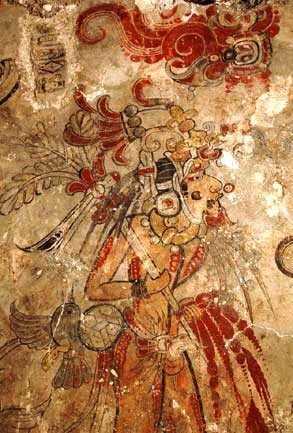
AMERICAN ASSOCIATION FOR THE ADVANCEMENT OF SCIENCE (AAAS)—Scientists have found evidence for the earliest known Mayan calendar notation, according to an investigation of painted mural fragments excavated from the Las Pinturas pyramid complex at San Bartolo, Guatemala. The fragments, which date between 300 and 200 BCE, record the date “7 Deer” in the 260-day divinatory calendar used across Mesoamerica and are about 150 years older than another well-known San Bartolo mural chamber. David Stuart and colleagues suggest that these fragments illustrate a mature art and writing tradition in the region during the third century BCE, indicating that the calendar had already been in use for a long time. “The evidence now suggests that we can no longer single out one region of Mesoamerica such as Oaxaca as ‘the’ point of origin for scripts or calendrical record keeping,” the authors write. “The situation would point to an even earlier origin of the calendar sometime during the Middle Preclassic, if not before, although the evidence remains indirect.” Archaeological excavations at Las Pinturas have previously unearthed murals depicting mythological deities and humans painted near the completion of the complex in about 100 BCE. To further explore the ancient site’s secrets, Stuart et al. analyzed 11 wall fragments (all with hieroglyphic writing) that were recovered between 2002 and 2012. The researchers used radiocarbon dates for 10 samples processed in 2005, as well as 2 new dates run in 2020, to determine the ages of the archaeological contexts of the fragments. The authors note that, during the Classic period that followed, Maya scribes rarely used the deer glyph to represent the seventh day, which consists of the number 7 in bar and dot notation over the outline of a deer head. Stuart et al. suggest that use of the glyph in this fragment may represent an early stage in Maya script development before a phonetic hand sign emerged to replace it.
_____________________________

Mural fragment in San Bartolo, Guatemala, rediscovered 2003, presented at the Palacio Nacional de La Cultura, May 2006. Pre-Classic Maya art. Authenticmaya~commonswiki, GNU Free Documentation License, Wikimedia Commons
_____________________________
Summary author: Shannon Kelleher
Article Source: AAAS news release.


